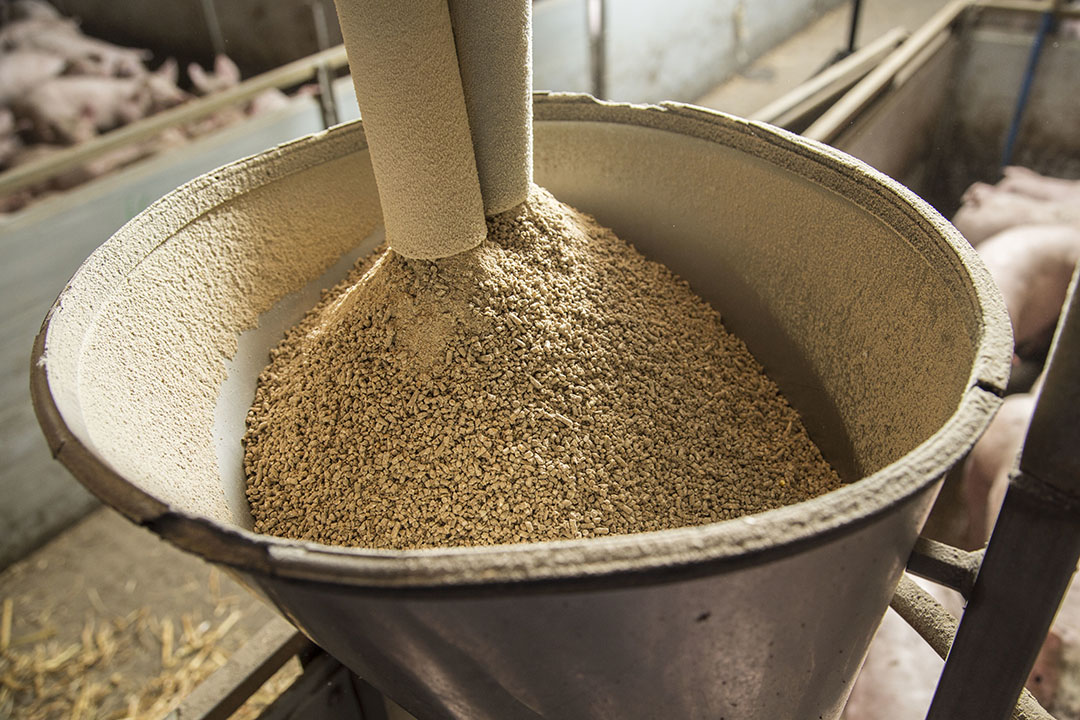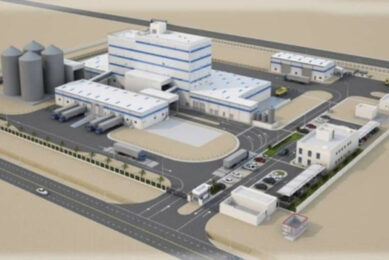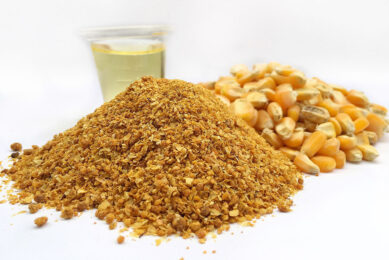Mixer types reviewed

Feed manufacturing contains a series of steps in which individual ingredients are combined into a homogeneous mix, further processed into customer desired forms and packaged or delivered.
The one of the most essential and critical operations in the process of feed manufacturing is mixing. Where the individual ingredients are combined into their proper ratios and uniformity distributed throughout the entire mass, yet it is frequently given little consideration.
Creating a completely homogeneous blend is the objective in mixingIf the ingredients are not properly mixed, then the nutritional quality cannot be assured. While insufficient mixing time and filling the mixer over the rated capacity are often implicated as common sources of variation in finish feed. The mixer performance can be affected by other factors such as particle size and shape of the ingredients, ingredient density, static charge, sequence of ingredient addition, worn, altered, or broken equipment, improper mixer adjustment, poor mixer designed, and cleanliness. |
Mixer Design – There are 2 types of mixers:
 Horizontal mixers
Horizontal mixers
Horizontal mixers consist of a horizontal tub that contains a shaft, through the centre, with the mixing elements. The centre shaft is driven by a flywheel connected to a drive motor via a chain or belt drive. In addition, the drive motor shaft is stepped down via a gear reducer. The blades move the material from one end of the mixer to the other, tumbling it as it goes. These mixers usually discharge the mixed product from the bottom, using the same mixer blade action. The most suitable mixer for blending up to 8% liquids into a dry mix is horizontal mixer and therefore offers greater versatility if a wide range of rations are to be offered from one feed mill unit. Warming the fats and molasses before addition to the raw materials in the mixer is preferable and they should be added as the last ingredients. Because the horizontal mixer is a faster mixing machine than a vertical mixer, 2 or perhaps 3 mixes can be achieved at the same time compared to one mix in a vertical mixer.

 Vertical mixers
Vertical mixers
Vertical mixers are quickly disappearing from the feed mill; however, they are still very common in on-farm feed manufacturing operations. This is due, primarily, to their reduced cost; however, because of their design, vertical mixers do fit nicely into an on-farm feed scenario. Vertical mixers have changed to some extent over the course of the years. Much of this change has been driven by change in animal feeding operations. Vertical mixers are the most common type found in small livestock feed mills. Though, the vertical type is less well suited to aquaculture, poultry and fish feeds than the horizontal type, which are much more efficient in blending in small quantities of liquids (such as added lipids) or in mixing ingredients with different particle sizes.
Also read: The benefits of in-line moisture management
The early designs of vertical mixers consisted of a vertical mixing tub. The mixing element consisted of 1 or 2 vertical screws that lifted the feed from the bottom to the top of the mixer. When the feed reached the top, it spilled over and was worked back through the centre auger configuration. In concept, the mixing action is effective and is capable of producing a homogeneous mix; however, because of the slow mixing action, the amount of time required to achieve a homogeneous mix is considerably longer (up to 5x) than the horizontal ribbon design. The next generation of vertical mixers, primarily designed for the dairy, utilises the same centre auger concept, but also includes knife blades on the auger flightings to produce some degree of particle size reduction in the coarse, roughage fraction.
Also read: Effects of pelleting on poultry performance
Distributing liquids
Vertical mixers are not suitable for mixing wet ingredients. Horizontal mixers are more suitable but, because of their complex construction, are often difficult to clean properly. There is also a trend for sticky materials to stick to the blades and to accumulate at one end of the mixer. Since many raw materials are dusty it is often desirable to include materials such as molasses, oils and fats in the formulations to reduce dustiness as well as providing a source of nutrients. Vertical mixers, because of their slow-running action, are generally less effective in distributing liquids throughout the mixture, and liquids tend to form beadlets or balls coated with fine particle material, rather than produce a surface coating on the solid material. For coarse cattle rations where large quantities of feeds are consumed per animal the need for a completely homogeneous distribution of liquid is less critical than for poultry feeds or feeds to be pelleted, where it is desirable that liquids be well mixed with minimal lumping. Vertical mixers have a general tendency to encourage particle size segregation, especially if too long mixing times are used. It may not readily fit into buildings with low roofs or ceilings, because they are tall units. However, they can be easily loaded manually at floor level, and are relatively low capital-cost machines widely used in feed manufacture where liquid addition is not required or for blending raw materials prior to grinding. A half-tonne capacity horizontal mixer for example could possibly replace a 1-tonne vertical mixer since 2 half tonne mixes could be made in a horizontal machine including loading and unloading in the same time as 1 tonne in a vertical mixer. A horizontal mixer is more sophisticated in terms of its engineering construction and thus more expensive to purchase than a vertical mixer of equivalent capacity. When sizeable quantities of feed are mixed, horizontal mixers are used (10 tons or more per day) and time is critical.
Blender types
There are 2 categories of blenders predominantly used in feed mills, namely:
- ribbon type
- paddle type
The mixing elements generally consist of a paddle or ribbon shape. The use of a paddle or ribbon configuration is a source of much debate; however, in general, the industry has chosen to move toward a ribbon configuration.
Paddle configurations were first utilised in horizontal mixers. The paddle concept utilises a series of paddles connected perpendicular to the centre shaft via a series of secondary shafts. The paddles essentially lift and fold the ingredients, similar to a shovel lifting a scoop out of a sand pile. The continuous ribbon essentially mixes the feed ingredients by pushing/pulling them throughout the length of the mixer.

By far, the ribbon design is more effective than the paddle design. This is because the ribbon design encourages co-mingling of the ingredients with each other, across the entire batch. In contrast, the paddle mixer only encourages co-mingling in the locus of the paddle itself; consequently, paddle mixers are notorious for dead spots.
| Dead spots are locations in the mixer in which no mixing occurs due to a lack of mixing action. |

This propensity for dead spots requires some modifications to the mixing procedure (Mix Cycle/Time section) to account for the reduced mixing action. The ribbon mixer consists of a U-shaped horizontal trough mounted on leg supports and containing a rotating agitator. Typically, the inlet is at the trough’s top centre and the discharge is at the bottom centre. In operation, ingredients are loaded into the mixer, typically filling it to between 40% and 100% of its rated capacity. This is up to the level of the outer ribbon’s tip, less than the unit’s total holding volume, and allows room for the material to be vigorously agitated and mixed. The agitator rotates and produces a peripheral speed (that is, ribbon tip speed) of up to approximately 300 fpm, depending on the application. The ribbons move material radially: The outer ribbons move the ingredients toward the blender’s centre, and the inner ribbons move ingredients out toward the blender wall. The difference in the outer and inner ribbons’ speeds moves material laterally or axially- that is, along the blender’s horizontal axis – in 2 opposite directions.

Remaining ingredients in mixer
It is important to clean the mixer from the materials. These materials are mostly nutrients and have high moisture. Hence these locations are potential points for mould and bacteria to grow. These points are named black spots where microbial contamination starts. Scrapers should be used to remove such materials.
Authors:
Alireza Abbasipour, Amir Attar, Samira Hassanpour, New Millennium Feed Processing Co., Mashhad, Iran
 Beheer
Beheer











 WP Admin
WP Admin  Bewerk bericht
Bewerk bericht